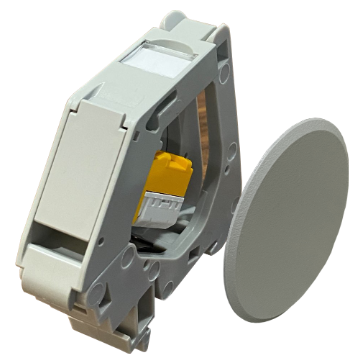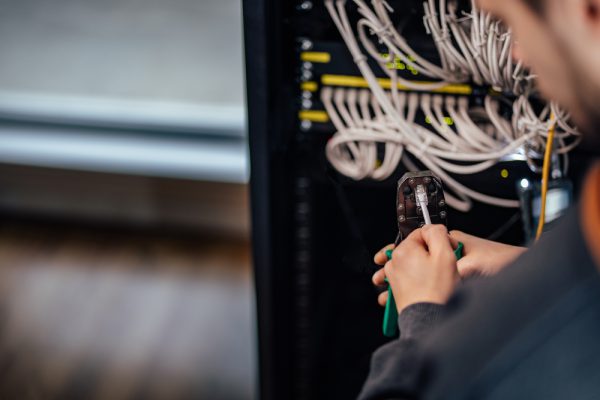Do you work in industry and installation technology? Then you know that a DIN rail is indispensable! Almost every meter cupboard or rainwater installation contains a DIN rail. Are you less familiar with it? We are happy to tell you what a DIN rail is, how to use it, and the advantages of using a DIN rail module from DINTEK.
The German Institute for Standardization has developed three standard profile rails:
- O-profile (Omega rail)
The most common type: 35 mm wide, 15 mm high, and recognizable by its Ω shape. Also known as NC 35/15. - C-profile
A more compact rail, available in 20, 30, 40, or 50 mm wide variants and recognizable by its C shape. - G-profile
An asymmetrical rail with a distinctive G shape.
What is a DIN rail and what is it used for?
A DIN rail (from the Deutsches Institut für Normung) is a metal mounting rail for mounting and securing electromechanical components in switch cabinets, such as relays, terminal strips, or power supplies. Each component has a matching design so that it clicks perfectly onto the rail.
DIN rails can be found in:
- Switch cabinets for residential and commercial buildings
- Industrial control panels
- Automation systems
- Measurement and control technology
Fun fact
DIN (Deutsches Institut für Normung) is also the source of the names of well-known paper sizes such as DIN A4 and DIN B1. In the Netherlands, we usually just say A4 or B1.
How do you use a DIN rail?
A DIN rail is usually mounted in a switch cabinet or other enclosure. Click all the necessary parts onto the rail. This ensures that you can easily connect the parts to each other using special connection terminals. The result is a neat and safe finish.
Important tips for use:
- Pay attention to the dimensions (the most commonly used is O-type DIN rail 35 mm)
- Use end stops to prevent shifting
- Ensure sufficient space and clarity in your cabling.
What are the advantages of a DIN rail module from DINTEK?
Do you use the standard 35 mm wide DIN rail? Then the DIN rail module from DINTEK is the solution for neatly mounting network cables in a location where a DIN rail is present or where a DIN rail is more suitable than a patch panel. Mount the cable on a keystone and click it into the DIN rail module. You then click the DIN rail module onto the DIN rail. It is possible to neatly finish the modules by sealing them on the left and right with cover plates.

Work smarter with DINTEK
Whether you want to add a single network connection or equip an entire switch cabinet with smart connections, DINTEK’s DIN rail modules allow you to work in a clear, safe, and professional manner.
Discover the N1303-0100X DIN rail module and experience the convenience for yourself. Do you have any questions or would you like advice? We are happy to help!
Contact us
More news

Pigtails, why are they essential in fiber optic installations?
Pigtail connectors spelen een belangrijke rol in glasvezelinstallaties. Maar wat is een pigtail precies en waarom gebruik je dit? We leggen in dit artikel uit waarom ze belangrijk zijn...